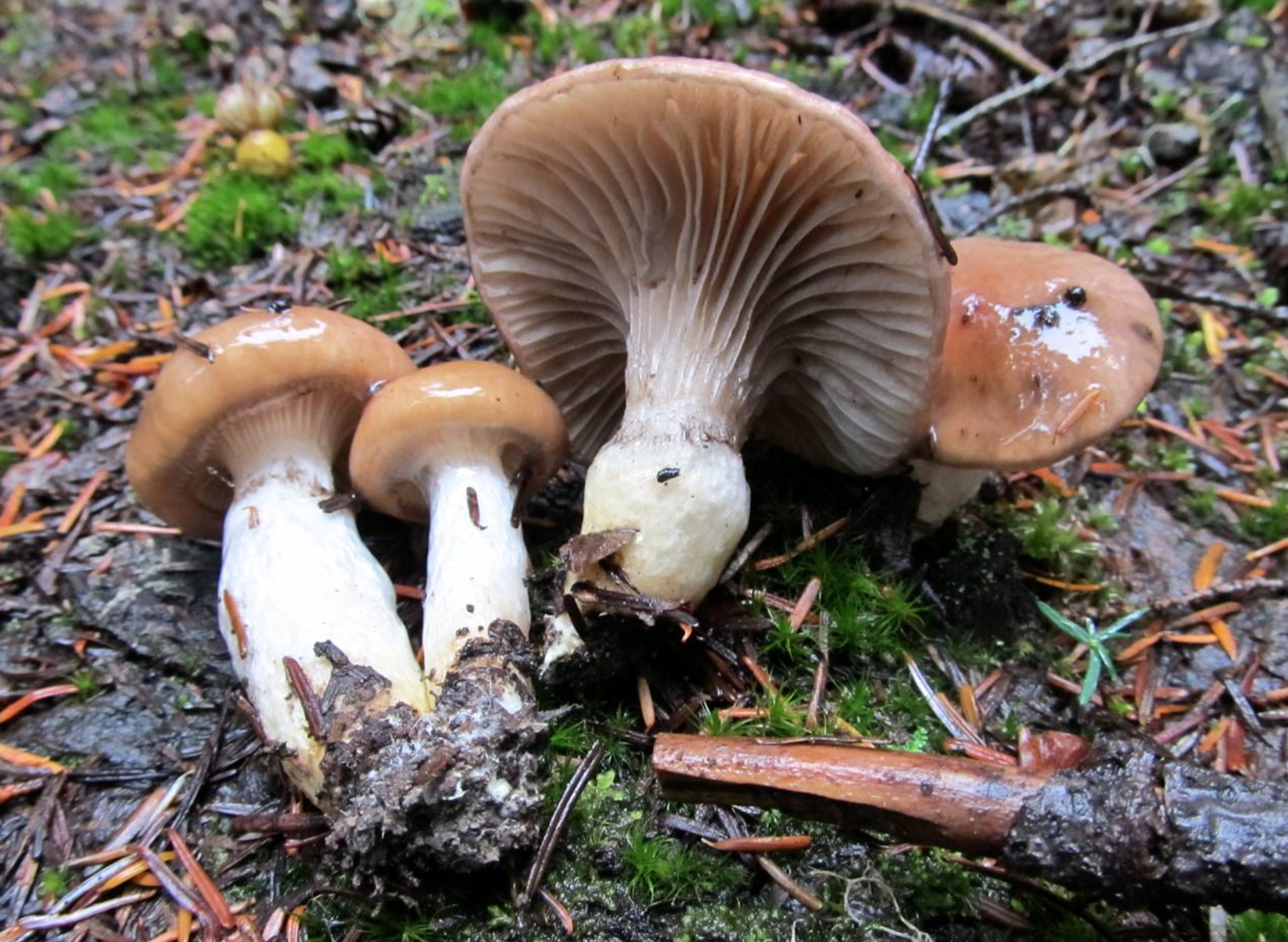There is a staggering number of fungal species that live on Earth. If you were to take just one fact away from these posts, I hope it would be the notion that there are 6 times more species of fungi than there are plants. With this crazy amount of fungi, sometimes, actually most of the time, their ecology is assumed rather than empirically tested. For instance, when a species fruits near the base of a specific tree over and over again, and that tree is known to form mycorrhizal relationships, it is assumed that the fungus is mycorrhizal. This is exactly what has happened with the species of fungus featured here in today’s Fungi Friday.
Gomphidius glutinosus although gilled, is actually a bolete mushroom. Like the handful of gilled boletes I’ve already wrote about, Gomphidius glutinosus too exemplifies the commonness of convergent evolution. Again, gills work really great. They allow plumes of spores to be ejected from their fruiting bodies, into nearby wind currents. This gilled morphology is a trait conserved in some species for millennia, but for gilled boletes like Gomphidius glutinosus, it is a trait the species lost, and then separately evolved again over time. Gills are a foolproof way to increase its spore bearing surface area, so for many species that lost the trait, it is only a matter of time until natural selection occurs and promotes the gilled morphology.
Gomphidius glutinosus. Photo by Drew Henderson.
Another adaptation this species has in its repertoire is its ability to hyper accumulate certain elements from the environment into its tissue. This may seem obvious in all, as this is what fungi do; chemically break down their environment into smaller, absorbable molecules. But when comparing Gomphidius glutinosus to other mushrooms, it seems like this species has an even stronger ability to hyper accumulate certain elements. A study conducted in 1994 surveyed the forest floor in Ukraine, near the Chernobyl powerplant disaster.
Radio cesium is a common metal product closely affiliated with nuclear power plants, so forests in close proximity to the 1986 disaster have more of this radio cesium, with concentrations decreasing with increased distance to the powerplant. By sampling the fruiting bodies of fungi in 35 forest sites in both close proximity to the original reactors, and as far as 200 km away, these scientists describe the species hyper accumulation action. Like they predicted, mushrooms harvested from sites closer to Chernobyl had more radio cesium in their tissue than fungi at sites further away. The biggest takeaway from this study for me was that the highest quantities of cesium were detected in specimens of Gomphidius glutinosus. This story doesn’t end here though. This is the part where I try linking it all together.
All of the Ukrainian sites sampled. Grodzinskaya et al. 1994.
Since the species fruits at the base of trees in conifer dominated forests, for years it was assumed that it lived a mycorrhizal lifestyle. Though, new research brings to light an alternative ecology that also help explain its ability to hyper accumulate cesium. In 2000, Pål Axel Olsson from Sweden and his team analyzed both molecular and anatomical evidence that more accurately describe how the fungus makes a living on the forest floor. They initially observed that Gomphidius species not only fruit near pine trees, but pine trees with the mycorrhizal bolete, Suillus bovinus. After analyzing the Gomphidius speciemens, it was realized that the mushroom was never found without the DNA of its now realized conterpart Suillus bovinus all over its surfaces. These scientists have since proposed firm evidence that the Gomphidius genus might actually be parasitic on mycorrhizal species.
This parasitic ecology actually is strengthened when you consider its ability to hyper accumulate radio cesium. The reason why this fungus has this trait, is because of an ecological concept called biomagnification. Radio cesium becomes absorbed indirectly by its mycorrhizal host, Suillus bovinus as its tree symbiote pumps sugar laced with the heavy metal into its hyphae. S. bovinus also accumulates cesium directly while it scavenges for soil nutrients. Already, S. bovinus has significantly higher amounts of the metal than the background environment. And then, species from the Gomphidius genus come along and start digesting tissue from the already cesium enriched bolete species. This is the reason why organisms positioned at higher trophic levels have a higher accumulation of pollutants. By looking a bit closer, this species that was once thought to be a mycorrhizal species has turned out to be parasitic on certain mycorrhizal fungi. This fascinating ecology also clarifies why the species ability to hyper accumulate metals.





